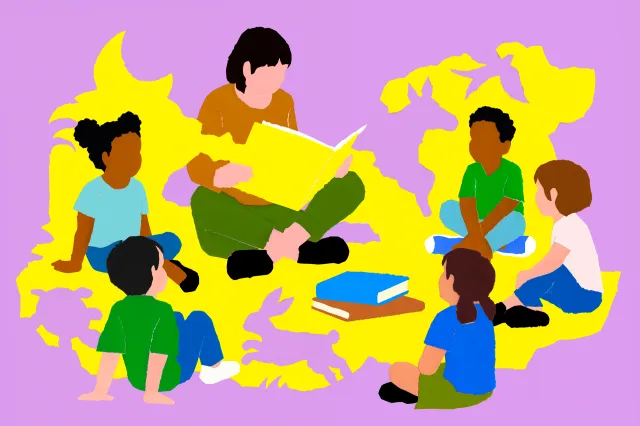Every parent dreams of a good night’s sleep, and helping your baby learn to self-soothe is a significant step towards achieving that. Self-soothing refers to a baby’s ability to calm themselves down and fall asleep or resettle without direct parental intervention. This can involve behaviors like thumb-sucking, finding a pacifier, or simply settling into a comfortable position. While methods like “crying it out” are often discussed, many parents prefer a gentler approach that supports their baby’s emotional security. This article will guide you through effective, cry-free strategies to foster independent sleep habits in your little one.
The idea of self-soothing isn’t about leaving your baby alone to cry. Instead, it’s about providing them with the tools and opportunities to develop their own calming mechanisms. It’s a developmental skill, much like walking or talking, that babies acquire at different paces. Historically, infant care practices have varied widely, but modern understanding emphasizes responsive parenting while also encouraging healthy sleep independence. This gentle approach acknowledges a baby’s need for comfort and security while gradually empowering them to find it within themselves.
Understanding Your Baby’s Sleep Cues and Temperament
Before diving into techniques, it’s crucial to understand your individual baby. Each child is unique, with different temperaments and developmental stages.
- Observe Sleep Cues: Pay close attention to your baby’s sleep cues. These are the subtle (and sometimes not-so-subtle) signs that your baby is getting tired. They can include rubbing eyes, yawning, staring blankly, fussiness, decreased activity, or pulling on ears. Catching these cues before your baby becomes overtired is key, as an overtired baby is much harder to settle. Missing these cues often leads to a baby becoming overtired, which triggers a stress response in their body, making it harder for them to fall asleep and stay asleep.
- Recognize Awake Windows: Babies, especially newborns, have very short awake windows (the time they can comfortably stay awake between naps).
- Newborns (0-3 months): 45-60 minutes
- 3-6 months: 1.5-2.5 hours
- 6-9 months: 2-3.5 hours
- 9-12 months: 3-4 hours Putting your baby down for sleep within their optimal awake window helps them fall asleep more easily, reducing fussiness.
- Consider Temperament: Some babies are naturally more laid-back, while others are more sensitive or intense. A highly sensitive baby might need more gradual steps and reassurance, while a more adaptable baby might respond quickly to new routines. Adjust your approach based on your baby’s personality.
Creating an Optimal Sleep Environment
A conducive sleep environment is fundamental for helping any baby sleep well, let alone self-soothe.
- Darkness: Ensure the room is as dark as possible, day and night, for all naps and nighttime sleep. This helps stimulate melatonin production, the sleep hormone. Blackout curtains are highly recommended.
- Cool Temperature: A room temperature between 68-72°F (20-22°C) is ideal for safe and comfortable sleep.
- White Noise: Consistent white noise can mimic the sounds of the womb and block out household noises, creating a calm and predictable background. Aim for a continuous, low hum (like a fan or dedicated white noise machine) rather than sounds with distinct patterns. Ensure the volume is not too loud (around 50-60 decibels, similar to a soft shower).
- Safe Sleep Space: Always follow safe sleep guidelines by placing your baby on their back in a clear crib or bassinet with a firm mattress and fitted sheet. Remove any loose blankets, bumpers, pillows, or toys.
Gentle Strategies for Encouraging Self-Soothing
These methods focus on gradual changes and parental presence, avoiding prolonged periods of distress.
- Establish a Consistent Bedtime Routine
A predictable bedtime routine signals to your baby that sleep is coming. Consistency is key, even if it’s just 20-30 minutes long.
- Steps: A typical routine might include a warm bath, a gentle massage, reading a book, singing a lullaby, and a final feed.
- Timing: Start the routine at roughly the same time each evening.
- Location: Perform the routine in the sleep environment to associate the space with sleep.
- Drowsy But Awake (DBA) Method
This is perhaps the most critical component of teaching self-soothing. The goal is to put your baby down in their crib when they are drowsy but awake.
- Identify Drowsiness: Look for those early sleep cues mentioned earlier. Your baby should be calm, eyes perhaps slightly glazed, but not fully asleep.
- Place in Crib: Gently place your baby in their crib.
- Provide Opportunity: Give them a moment to settle themselves. They might fuss for a minute or two. This is their opportunity to learn to fall asleep independently.
- Respond if Needed: If the fussing escalates to crying, respond promptly. The aim is not to let them cry it out.
- The Pick-Up/Put-Down Method (or “Shush-Pat”)
This method, popularized by experts like Tracy Hogg (“The Baby Whisperer”), involves responsive comforting without always resorting to picking up.
- Observe First: When your baby fusses or cries after being put down, wait a brief moment (e.g., 30-60 seconds) to see if they resettle.
- Gentle Intervention (Shush-Pat): If fussing continues, enter the room and offer comfort without picking them up initially. This could involve:
- “Shush-Pat”: Gently shushing near their ear and patting their bottom or chest rhythmically.
- Hand on Chest: Placing a reassuring hand on their chest.
- Verbal Reassurance: Softly whispering “Shhh, it’s okay, time to sleep.”
- Pick-Up if Needed: If the crying intensifies or becomes distressed, pick up your baby to comfort them. Once calm, immediately place them back down, drowsy but awake, and repeat the process. This teaches them that you are there, but they are also capable of falling asleep in their own space.
- The Chair Method (or “Camping Out”)
This method involves gradually increasing your distance from your baby’s crib as they learn to self-soothe. It’s a very gentle fading technique.
- Start Close: On the first night, place a chair next to the crib. When your baby fusses, offer verbal reassurance, shushing, or patting without picking them up unless absolutely necessary.
- Gradually Move Away: Over subsequent nights (or every few nights), move the chair a little further away from the crib, eventually out of the room.
- Respond Appropriately: Continue to respond to genuine distress, but give your baby more space and time to settle as you move further away.
- Incorporating a Transitional Object
A transitional object, also known as a comfort object or lovey, can become a powerful tool for self-soothing, particularly for babies aged 6 months and older.
- Safety First: Ensure the object is safe for sleep (e.g., small, breathable, no loose parts). For babies under 12 months, consult safe sleep guidelines before introducing anything into the crib. Many experts advise against anything in the crib for babies under one year due to SIDS risk.
- Introduce During Calm Moments: Let your baby become familiar with the object during feeding, playtime, or cuddle time.
- Associate with Sleep: Bring the object into the bedtime routine to create a strong association with sleep and comfort. For example, if you’re nursing or bottle-feeding before sleep, let the baby hold the lovey during the feed.
- Familiar Scent: Some parents sleep with the lovey for a night or two so it carries their scent, providing extra comfort.
When to Start and What to Expect
- Timing: While you can begin establishing a routine from birth, formal self-soothing techniques are typically introduced around 4-6 months of age, when babies are developmentally ready to connect sleep cycles and have outgrown the newborn feeding-on-demand phase. Always consult your pediatrician before starting any sleep training method.
- Patience is Key: This is not an overnight fix. There will be good nights and challenging nights. Consistency, patience, and responsiveness are crucial.
- Be Flexible: There’s no one-size-fits-all solution. Be prepared to adjust your approach based on your baby’s response.
- Manage Expectations: Your baby won’t become a perfect sleeper immediately. The goal is progress, not perfection. Celebrate small victories.
Teaching your baby to self-soothe without crying it out is a journey of gentle guidance and responsive parenting. By creating a consistent routine, optimizing their sleep environment, and offering the right amount of support, you can empower your baby to develop essential sleep skills that will benefit the whole family.
Frequently Asked Questions (FAQ)
Q1: What does “self-soothe” mean for a baby?
A1: Self-soothing means a baby’s ability to calm themselves down and fall asleep or resettle after waking without direct help from a parent. This can involve actions like thumb-sucking, finding a pacifier, rubbing their head, or simply shifting into a comfortable position and drifting off to sleep. It’s a developmental skill that helps them become independent sleepers.
Q2: At what age can a baby start to self-soothe?
A2: While establishing routines can start from birth, babies typically develop the capacity for more consistent self-soothing around 4 to 6 months of age. At this stage, their sleep cycles mature, and they are developmentally ready to learn to connect those cycles without needing parental intervention for every wake-up.
Q3: How is this different from “crying it out”?
A3: The key difference is parental responsiveness. “Crying it out” (CIO) methods typically involve leaving a baby to cry for predetermined periods without intervention. Gentle self-soothing methods, like those described here, emphasize a gradual approach where parents respond to distress and offer comfort, but gradually give the baby more space to learn to settle themselves. The goal is to minimize prolonged crying and maintain the baby’s sense of security.
Q4: My baby still cries when I put them down drowsy but awake. What should I do?
A4: This is normal! Drowsy but awake is a skill that takes practice. If your baby cries, try the “Shush-Pat” method first. If they escalate to distressed crying, pick them up, calm them down, and then try again. Ensure your baby isn’t overtired when you put them down, as overtiredness is a common reason for crying at bedtime. Consistency is more important than perfection in the beginning.
Q5: Can I use a pacifier to help my baby self-soothe?
A5: Yes, a pacifier can be an excellent self-soothing tool for many babies. It provides a non-nutritive sucking comfort. If your baby uses a pacifier, you can offer it when you put them down drowsy but awake. As they get older, they may learn to find and reinsert it themselves. The American Academy of Pediatrics also notes that pacifier use at bedtime and naptime may reduce the risk of SIDS.
Q6: How long does it take for these gentle methods to work?
A6: The timeline varies significantly from baby to baby. Some babies may show progress within a few nights, while others might take several weeks. Consistency is the most crucial factor. Be patient, stick to your chosen method, and be responsive to your baby’s individual needs. Small improvements over time are a sign of success.





